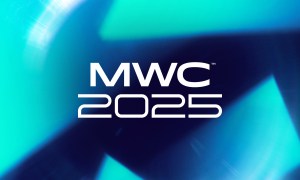
For the last nine years at Mobile World Congress, Google and its partners have distributed collectible pins featuring Android characters to attendees. They’re fun, cute, and often create a vibrant collectors scene. Collect them all, and you can earn some cool Google merchandise.
For 2019, the pins are back, but they’re also joined by augmented reality (AR) pins accessed and collected in an AR app. But it’s far from being a frivolous time-waster for those who’re supposed to be working. It’s a demonstration of what real-world augmented reality mapping, navigation, and information could be like in the future.
AR pin collecting
First, let’s talk about how the app and AR elements work. Spread around the show floor at MWC 2019, outside Google’s own stand and those of various top partners, are AR markers, which look like QR codes stamped on the ground. Using the Android Partner Walk app, you scan these codes with your phone’s camera to see and collect AR versions of the physical Android pins. All you need is an AR Core-enabled smartphone, and the right app.

The experience is similar to using the fun AR elements featuring Star Wars and other characters on the Google Pixel. The Android characters are well-animated 3D creations, often complete with sound. Once you’ve admired it, it’s just a tap to add the character to your collection. Think of it like Pokémon Go, but with Android characters, and less running around.
On the surface, that’s all there is to it, but it’s what happens next that’s exciting. The app provides signs and directions on where to go to collect the next pin, all in AR on the screen, complete with direction markers. It’s Google Maps, on a local scale, and in augmented reality.
Simplified, logical navigation
We chatted with Google’s director of VR/AR design, Joshua To, about how the AR pins at MWC help show what will be possible in the future. He explained the technology is similar to that seen in Google’s recently revealed AR Walk feature, which is undergoing beta tests. These aren’t simply QR codes on the ground either, they’re procedurally generated tags that understand their location, enabling the app to guide you on to the next pin.

It’s fun at MWC 2019, but imagine the same technology being used in large spaces like shopping centers and airports, complicated areas that are difficult to navigate, or massive scale events like the Olympics. Joshua To enthused about the potential for this localized AR tech at places of interest. Using a cityscape or historical structure as an example, he said by scanning an AR marker you could visualize how the building or area looked 50 years ago, right alongside how it looks in real life today.
Now think about the same tech at the Olympics, where information on events, world records, and the latest results could be displayed in real time, before leading you to the next event, all using the contextual markers and AR directions.
Walking into the future
While some will complain about us being even more tied to our phone screens, looking at monuments in AR instead of the actual thing right in front of us, we don’t agree. Carefully implemented, this next-generation navigation could help do the opposite by providing clearer directions that make us look up, rather than down. Additionally, AR Core is not an exclusive feature on only the most expensive devices either. Hundreds of millions of Android phones around the world are compatible, opening up any future implementation of the navigation and information system to a vast amount of people.

Joshua To told Digital Trends:
“The experience we’ve launched at Mobile World Congress demonstrates AR’s potential to help people navigate the world around them, as well as getting relevant and contextual information to enhance the experience further. We’ve all experienced being lost or wanting to learn more about a place we are unfamiliar with, and we are excited to see how AR can be used to solve some of these problems”
From show floor to the real world
Back on the show floor, you’ll have to work hard to collect all the AR pins. There are 15 partners involved, including Samsung, Huawei, LG, and Qualcomm, four MWC locations, and two locations at Google’s booths. What’s more, some AR pins will only be accessible on certain days, much like the way the physical pins on offer change each day. In total, there are 21 characters to see and collect, each of which has more than 60 unique animations.
Google introduced its AR navigation system at Google I/O 2018, and a select group of Local Guides (the name given to members of its community review program) are currently testing its AR Walk feature in Google Maps. The AR Partner Walk at MWC 2019 is an extension of this, and gives us a better look at how we’ll use the feature in the real world.
